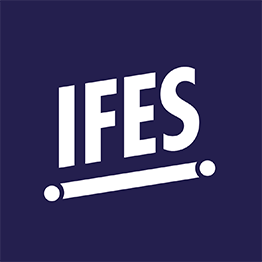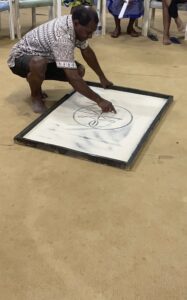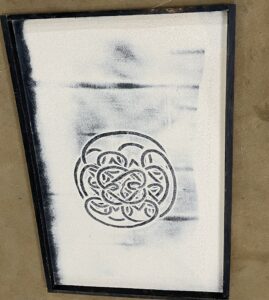Vanuatu is a cluster of islands in the South Pacific and home to the Gud Nius Yunivesiti Felosip (GNYF), our IFES movement. Most of our country is still populated by small, subsistence-farming communities, and only a tiny portion will ever be involved in tertiary education (<1%). Many students will come to university having grown up in churches their whole lives, but still unsure of how to listen carefully to God’s Word and sometimes unclear on exactly who Jesus is or why our love, trust, and knowledge of him is vital. Even at the tertiary level, our students don’t really enjoy sustained engagement with written texts, preferring to hear and talk about what matters.
We wanted to devote a year to intentionally sharing the gospel with our friends and classmates on campus in ways that fit the relational nature of the islands and the strong oral preference in learning, as well as helping people engage with Jesus by piercing through the ‘church background noise’. We decided on a Melanesian version of ‘Uncover’ (a well-received gospel distribution project) called ?Huia Jisas?—Who is Jesus? While this focused mainly on students sharing stories from Mark with other students, we also planned some key public events that would connect our networks with the wider university community in a ‘Vanuatu’ way.
One of the traditional ways of imparting knowledge in Vanuatu is sandroing (or bwatiuli in the Raga language from Pentecost Island). This involves making patterns in the ground with a finger to leave messages, share information, or pass on significant stories. Our idea was to use this local artform to convey the gospel stories we wanted our friends and classmates to hear. We connected with a local bwatiuli expert, Uncle Edgar, to develop four new patterns that reflected four themes from those gospel narratives: sin, forgiveness, reconciliation, and rule.
After a few weeks of reading and discussing the Mark narratives with Uncle Edgar, we presented these new patterns during a special event at our regional university campus. Our staff worker and students told four key stories from Mark, then Uncle Edgar introduced us to a traditional-style story and song he’d composed. It described two people (representing us and God) in a relationship that had broken but been reconciled. As he played the bamboo flute and shared each part of the story, he carefully drew the complex arcs and shapes representing the characters and concepts of what was being told.
As far as we (or Uncle Edgar) know, this is the first time that sandroing has been used in collaboration with and to share the Scriptures. He is excited to take these stories and patterns to his church so that Vanuatu can hear—and see—the good news of Jesus, settled in their hearts and etched in their land.
Scripture Engagement in IFES



